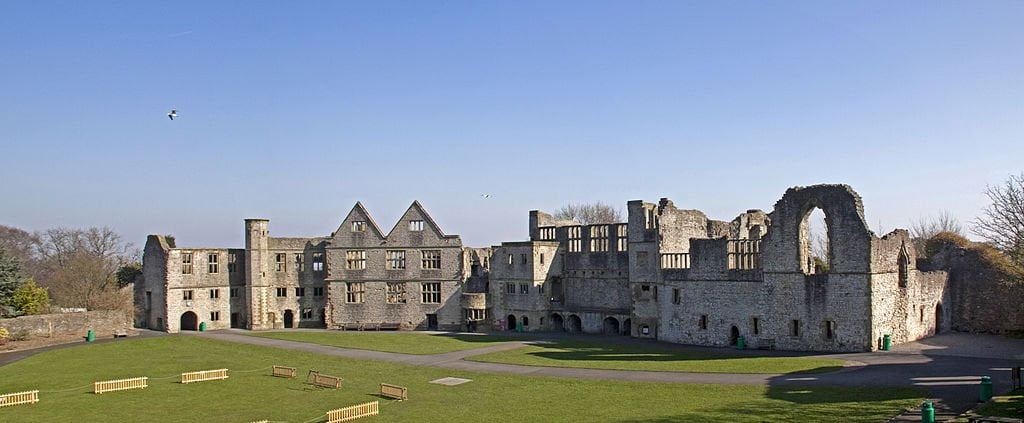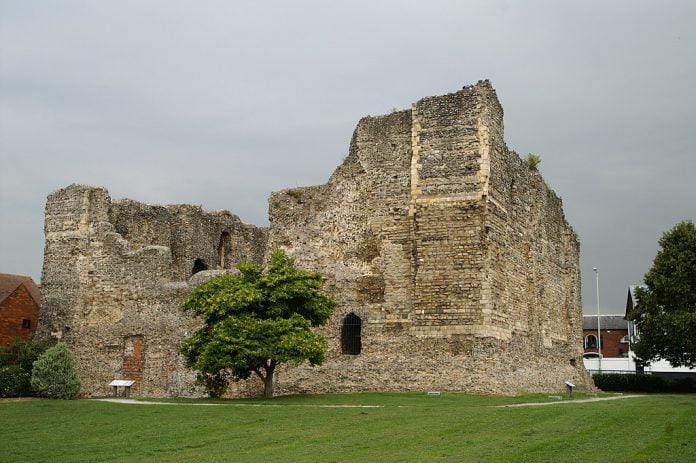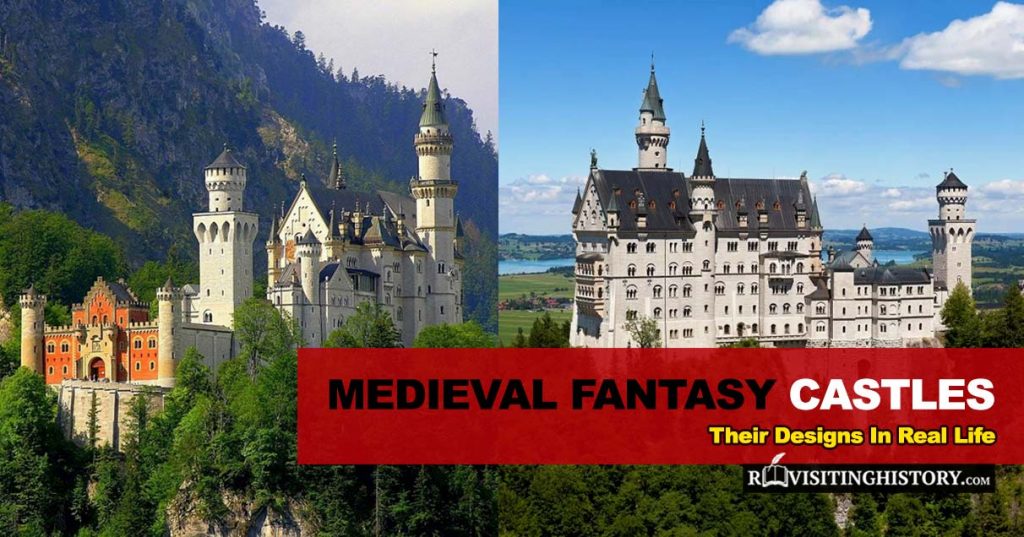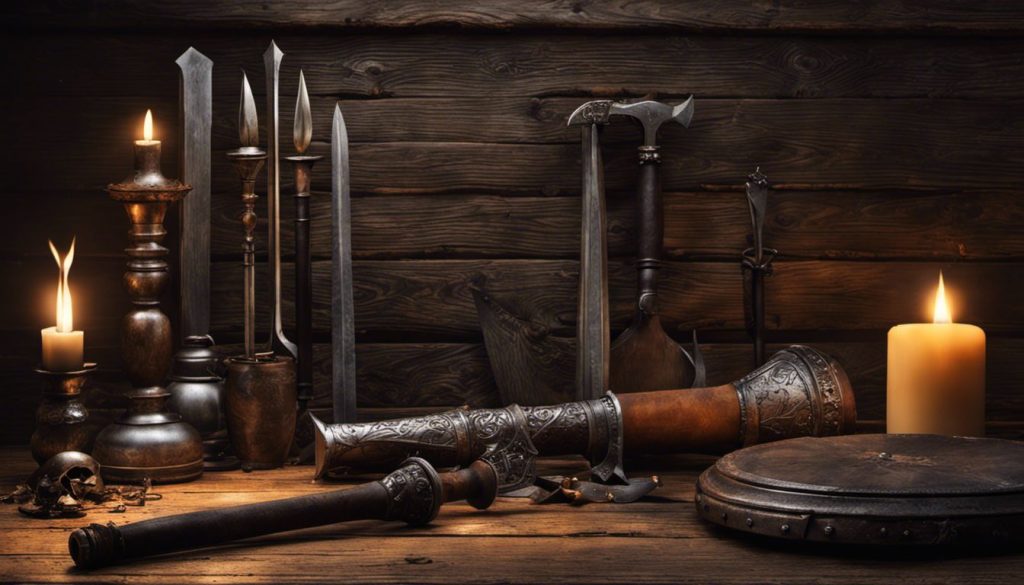Norman castles are some of the most epic medieval structures to date. They have a rich and interesting history that dates all the way back to the early 1000s. The one person who began this phenomenon was none other than William the Conquerer.
Table of Contents
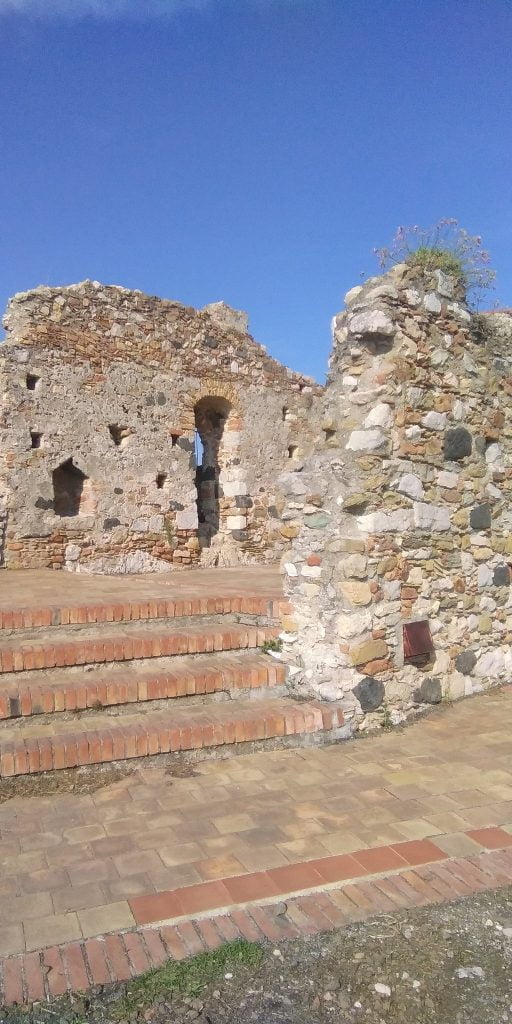
William redefined the course of history by riding on the wings of his success after defeating King Harold in 1066. It was an army of 10,000 Normans against half a million indigenous Anglo-Saxons. In his strategy to maintain control of the land, William the Conquerer became the father of a niche medieval architectural genre known as motte-and-bailey castles. These were the first of their kind in England, and their purpose was to defend against rebels by using the elements of the natural terrain like steeply sloping hills or large bodies of water.
Now, before delving into the details of these castles’ construction, here’s a brief history of Normans and how they ended up in England…
Norman Origins and Arrival in England
Norman origins date back to 8th-century Scandinavia when bad weather and food shortages pushed them to rain other European lands. These invaders were better known as the Vikings. The ones who stayed put in France became officially known as the “Normans” (shortened from the Northmen).
It was here that they adopted new cultural norms. Still, their conquering spirit never truly went away – especially because it was aided by their belief that the eldest son would inherit the father’s land after he passed away. To make their own marks, the younger sons would go out and conquer lands. Here’s a fun fact: William the Conquer, who ended up being the most renowned of Norman leaders, was not the eldest son at all. In fact, he was the illegitimate son who only inherited because his father, Robert the Devil, had no legitimate heirs. Thus began the conquest of this particular Duke of Normandy and his journey of dotting England with castles that became synonymous with the Norman invasion.
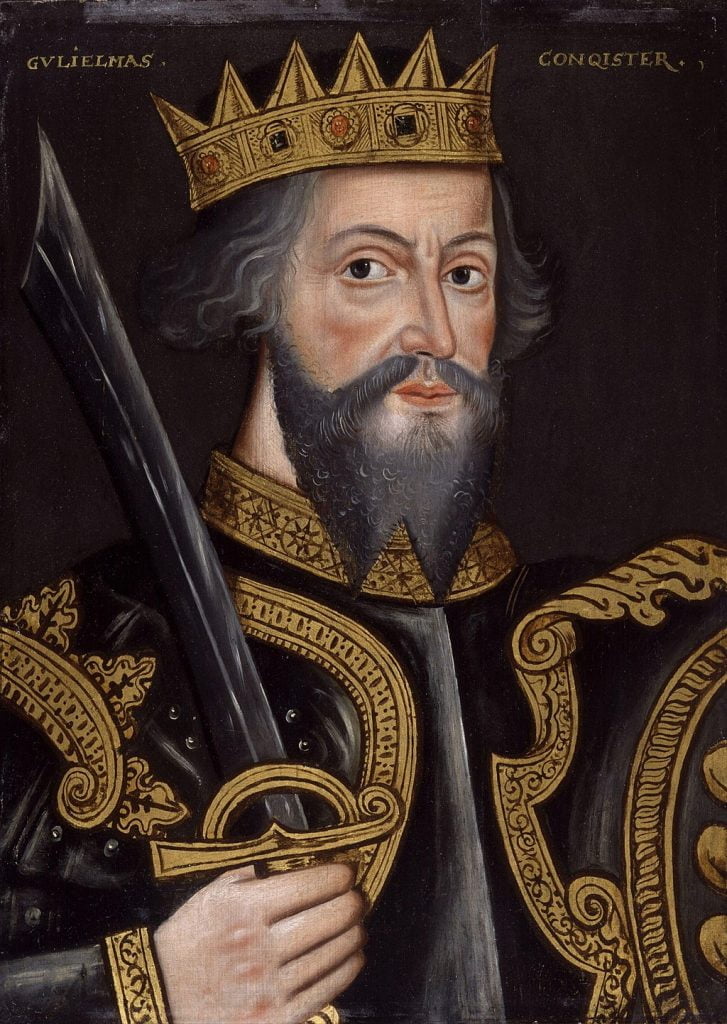
Norman Castles & their Characteristics
After ascending the throne, William the Conquerer first built a network of architectural defenses to retain control of the land and curb any Saxon rebellions in the bud.
The idea was to control the very landscape of the kingdom, and these castles performed to the best of their ability. They became an intrinsic part of Norman rule. Some of them acted as military bases, while others had more administrative uses. In fact, it is estimated that there were almost 50 castles built in the first 20 years of William’s successful invasion of England.
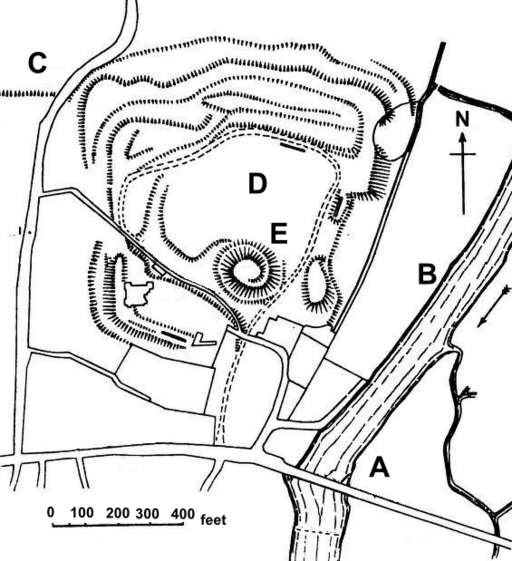
William the Conquerer achieved what he set out to do with constructing these castles by fortifying his new kingdom to the extent that no other foreign invaders could repeat his success. Every major town was fortified with a castle at its center, so the core of warfare shifted. Instead of large open-field battles, there were now local sieges to undermine important castles.
Basic Architecture of Norman Castles
Norman castles served as the prototype for medieval architecture – they acted as a blueprint for their development and finality. The Normans built their initial castles in timber, but that’s not what set them apart. Their most unique characteristic is how they used the land and surrounding topography to their advantage in the construction. That’s the reason why they became known as motte-and-bailey castles.
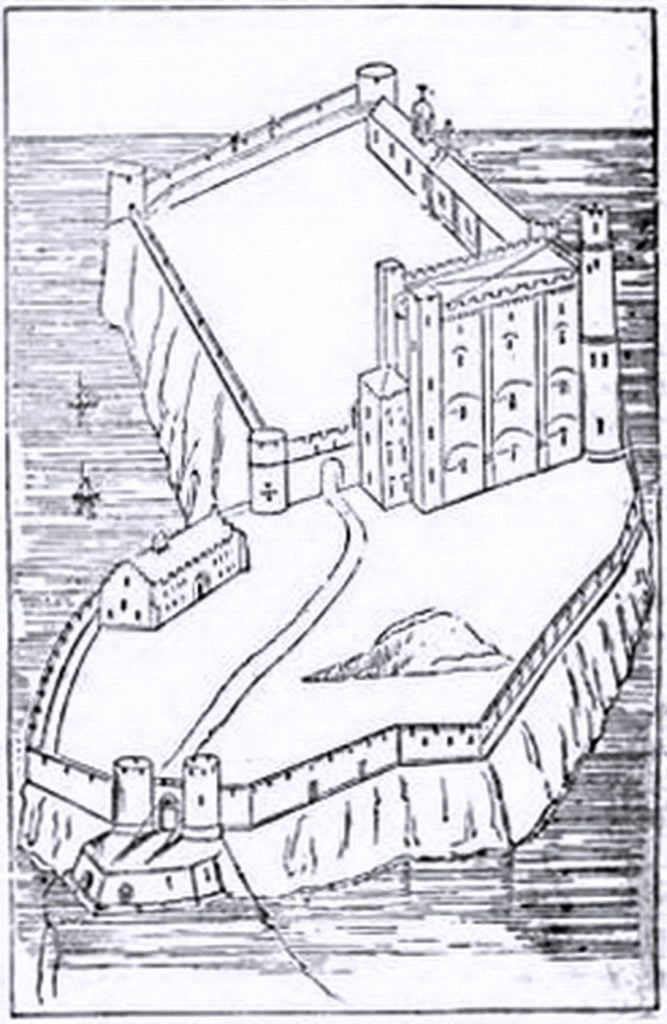
The leaders looked for land naturally protected by steep hills or near water bodies. One of the first examples of these castles was the one constructed by the Norman leader Richard Fitz Gilbert, who selected a site, dug a deep round ditch, and placed all the displaced dirt in the center to create a mound. This mound is called the “motte.” It was accompanied by a walled courtyard that acted as another layer of defense, known as the “bailey.”
Fun fact: The motte of Richard Fitz Gilbert’s castle was 60 feet high. Imagine achieving that kind of height with zero modern construction machines.
Characteristics of Norman Castles
Here’s a list of all the characteristics unique to Norman Castles:
Moat
One of the most obvious characteristics of Norman castles is that they have a moat. They were an important defense feature as they gave any attackers a huge obstacle to overcome before reaching the castle. Moreover, some of these moats were filled with water, but others were deep dry ditches. They also minimized the risks of enemies digging up tunnels to reach the castle. It laid out the framework for later medieval castle defenses.
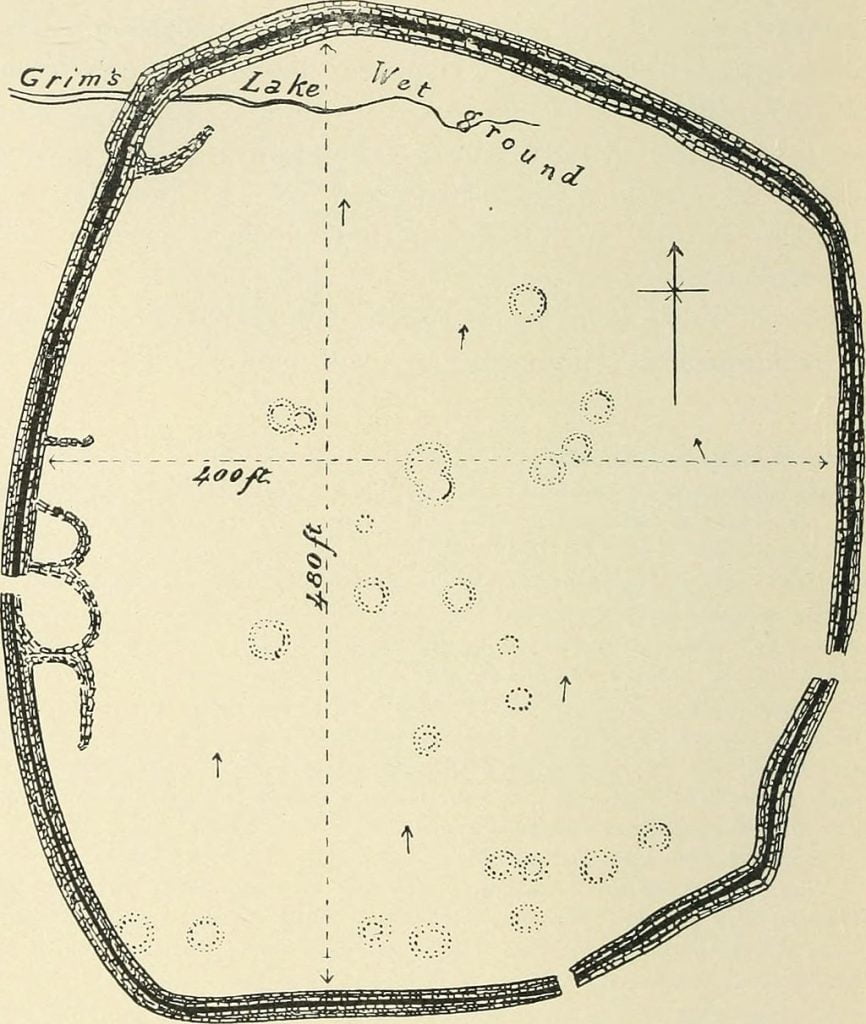
Wooden Fence
The initial Norman castles had a wooden palisade or fence that later became stone curtain walls as the architecture evolved. This fence was constructed on the inner lip of the moat and surrounded the bailey/courtyard in the center of the castle walls.
Gatehouse
The castle gatehouse is one of its most important features. For Norman castles especially, it held more importance because it would have been the only entrance. With the passage of time, designs evolved to integrate multiple gatehouses. As for their function, these gatehouses were defensive features, weaponized to destroy enemy forces before they could enter the castle’s heart.
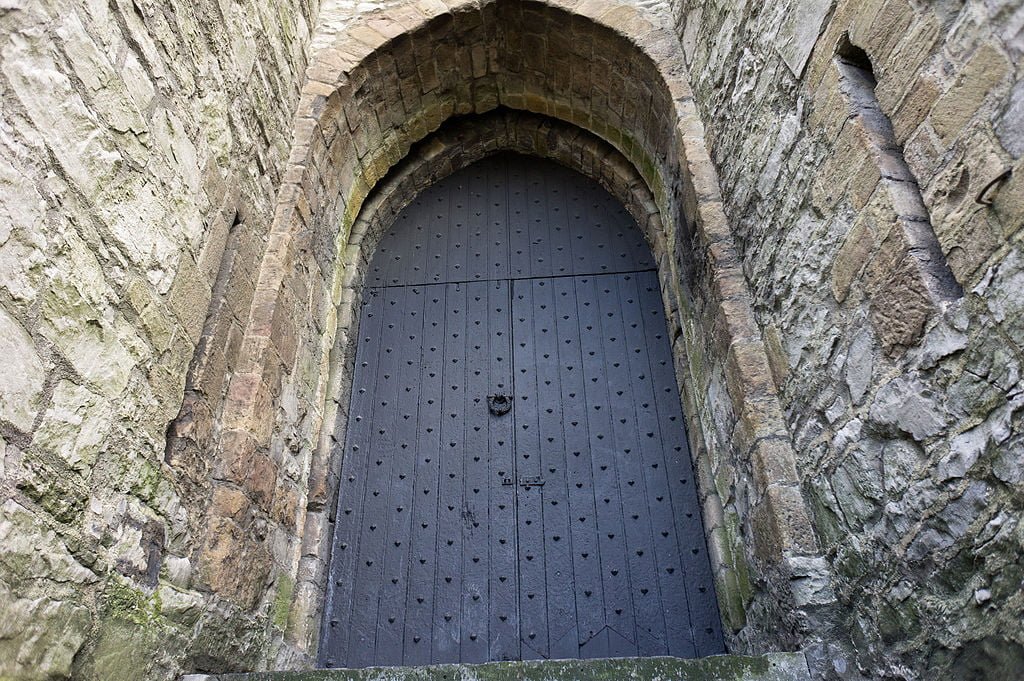
Stone Keep
Located within the heart of Norman castles, the castle keep was where the residents lived and conducted their everyday activities. With time and innovation, more rooms in the castle were added (e.g. master bed, solar, etc.), but the initial layout of the keep was rather minimalist and utilitarian. As for the exterior, the Norman keep was far from the elaborate gothic castles that came after. Instead, it was just as simple as its exterior – a square-shaped tower that spanned three to four floors and had a single entrance point.
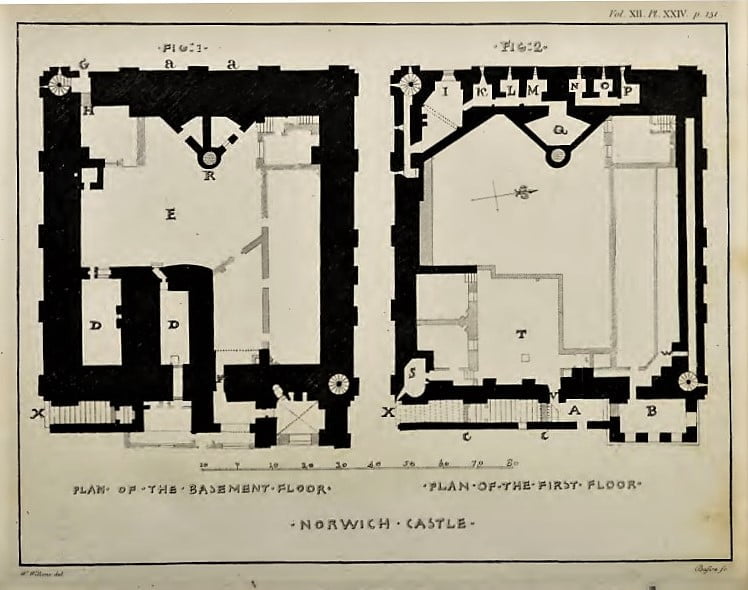
Miscellaneous
Other than that, there were several small buildings in the Norman castle bailey. Most of them had thatched roofs and their functions varied. These outhouses comprised kitchens, barns, stables, or even a blacksmithy at times.
Explore Medieval Times Deeper or Continue Reading…
Wooden vs. Stone Norman Castles
The wooden motte-and-bailey castles were just the beginning of the Norman footprint on England. They quickly became even more permanent features when they evolved into stone medieval castles.
The reason why Normans converted to stone was that the timber rotted very quickly. It also swiftly caught fire and acted as a weak defense point in the overall strategy. However, the evolution was slow – it started with raising timber structures on stone foundations before fully evolving into complete stone structures.
This evolution took a lot of time and there are multiple reasons for it. One of the main disadvantages of stone castles was the expense. The other was the extensive labor force, and the last was the sheer amount of time they took to complete. This is why most of the stone construction was done by working around the existing timber structures.
The Tower of London is one of the most famous stone medieval castles in the whole world. Built as the Norman’s principal fortress in the London area, it was a much-resented intrusion on the cityscape at the time. Nowadays, it is arguably one of the most defining architectural features of Britain’s identity.
The Nitty-Gritty of Norman Stone Castles
The architecture of the Norman stone castles was different than the timber ones. Although the basic purpose was the same, stone as a material added a lot of new variables. Let’s take a look at it in a bit more detail:
Types of stones:
Stone was the basic building block of those medieval castles – much like bricks were used in later centuries & concrete is used in modern day. Hard chalk, sandstone, and even flint were used in their construction. Limestone was used for finishing. Most of this stone was derived from quarries and delivered on-site via rivers whenever possible.
Baileys to yards:
Baileys eventually converted into courtyards within stone Norman castles. They were protected with multiple defensive features and housed the barracks, stables, and other miscellaneous buildings. Some Norman castles had multiple courtyards
Additional Features:
Many additional features were added to the stone version of Norman castles. While the keep still remained at the heart of the construction, the gateway morphed into a noticeable stone entity. Barbicans were introduced on either side of the gateway and elements like murder holes and arrow loops were added to the gate as well.
Towers were also added to the boundary/curtain wall (as a structural stabilization as well as a defensive element). In fact, the curtain wall saw an incredible amount of evolution with the advent of stone construction. The most notable feature was the addition of merlons and crenellations for added defense. This is where soldiers took cover while shooting arrows and boulders at any approaching enemies.
Popular Norman Castles
Alnwick Castle
Alnwick Castle is a long-time icon, today renowned across the world as a place where the Harry Potter movies were shot. It is still owned by the Dukes of Northumberland and dates back to 1096 when it was initially constructed to protect the area against Scottish intrusions. It has seen the rise and demise of several owners before finally coming under the rule of the Percy family. Today, it holds the title of the longest inhabited castle and welcomes tourists every day into its grounds while offering multiple attractions.
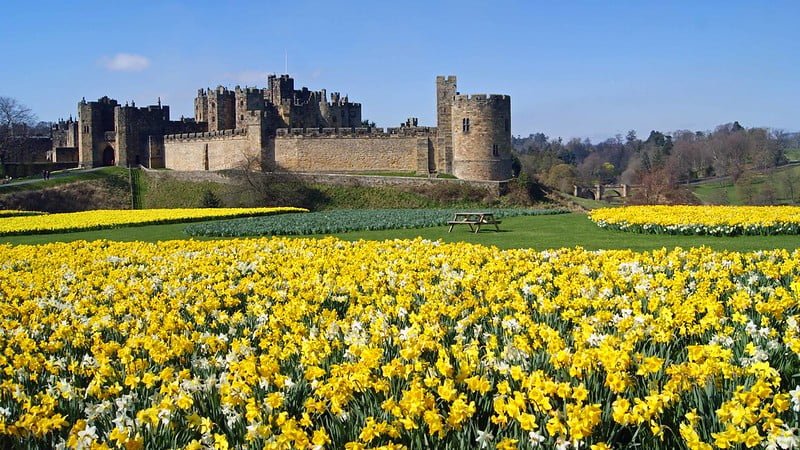
Windsor Castle
As one of the late Queen’s official three residences, Windsor Castle has garnered global repute. Even back in the 11th century, it was used as the official residence of the reigning monarch, so it has a long history of housing royalty (900 years, to be exact). Today, the castle spans 13 acres of land and stands regally in the center of lush manicured and landscaped surroundings.
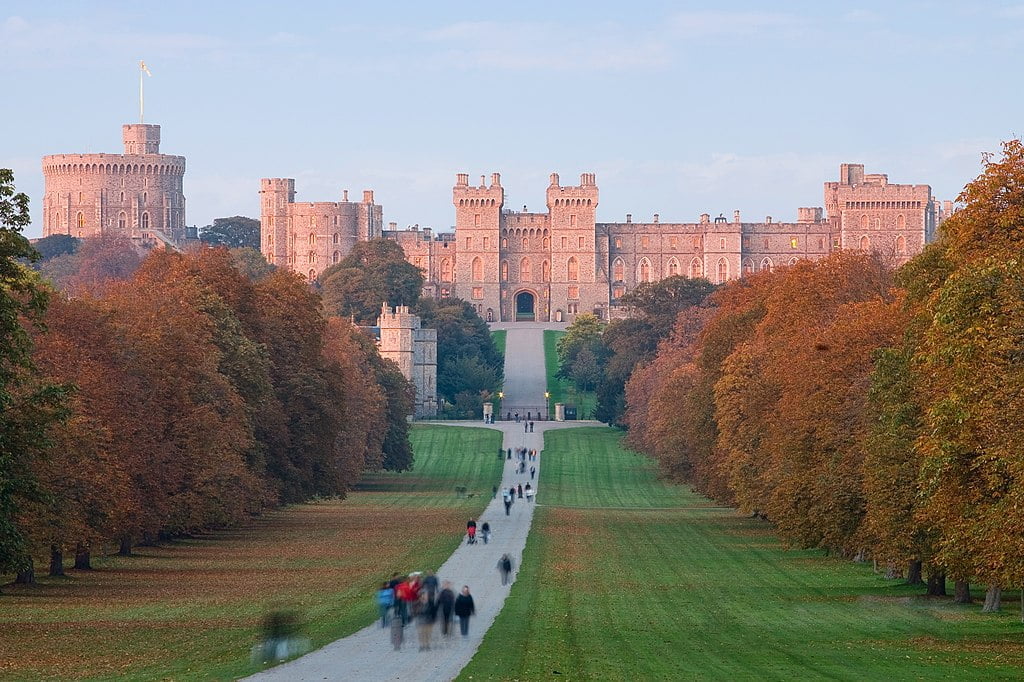
Warwick Castle
Built in the 12th century as a motte-and-bailey castle, Warwick is another Norman castle legacy that exists to this day – albeit with a few necessary modifications. With its various rooms, towers, and expansive grounds, it offers a deep glimpse at history and eras gone by to its visitors. It’s also one of the castles whose timber construction was morphed into stone architecture with the passage of time so that definitely gives it extra significance.
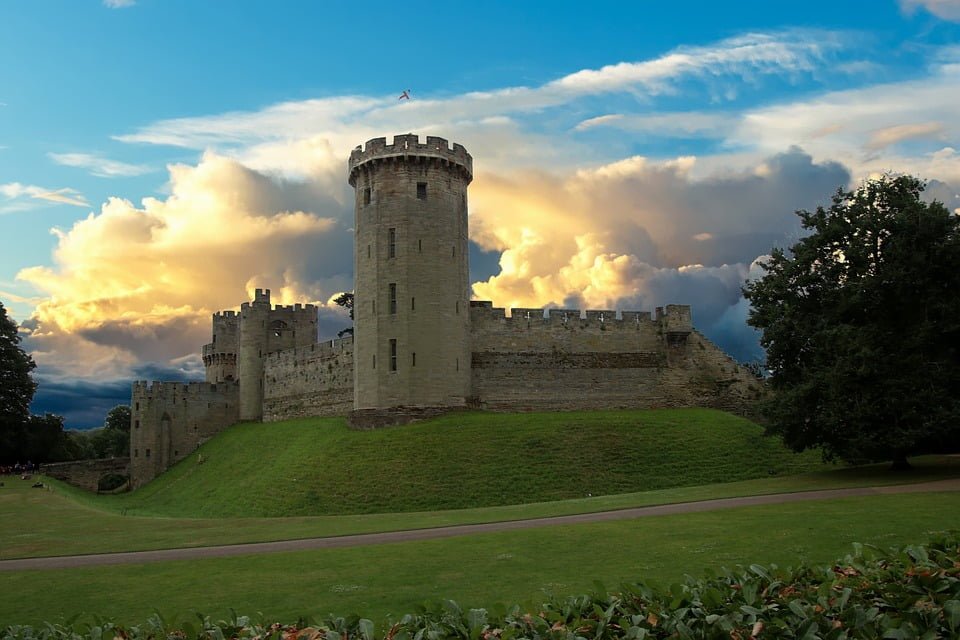
Pevensey Castle
Pevensey Castle was one of the original wooden constructions erected by William the Conquerer after his arrival. It was temporary at first but quickly became a permanent feature as a full-blown Saxon fort, while containing the pre-existing Roman construction within its boundary wall. Only two-thirds of this castle stands today while the rest of it is in ruins. However, it’s still considered one of the most impressive Norman castles to this day.
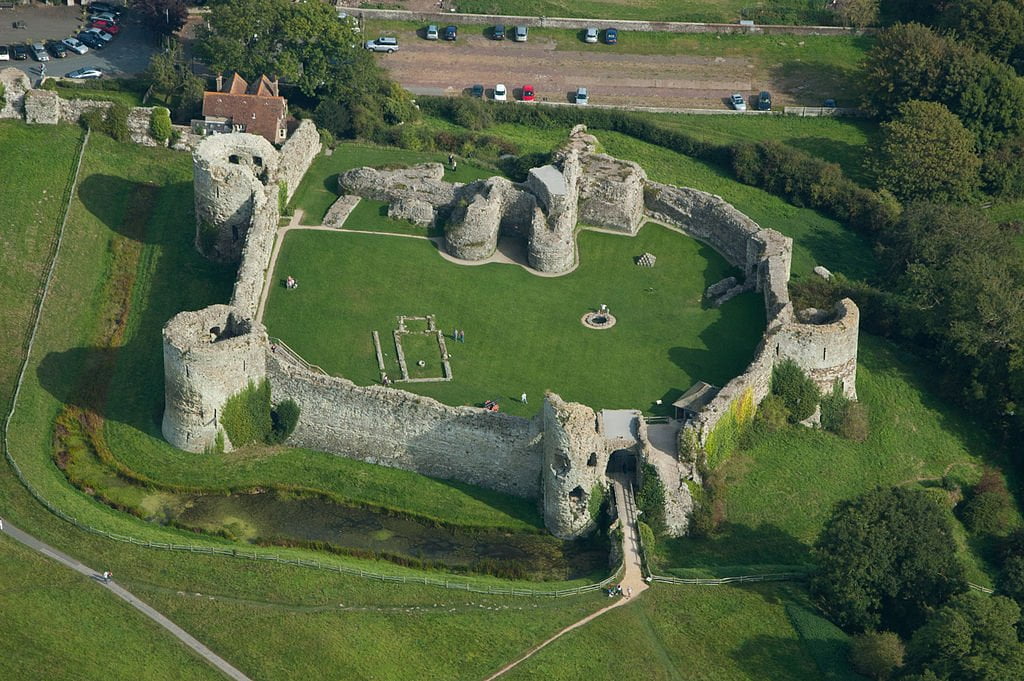
Colchester Castle
As one of the largest keeps ever built, Colchester Castle enjoys the position as one of the seven man-made wonders of England. It was commissioned by William the Conquerer in the 11th century. The unique part about its architecture is that it was built on the ancient foundations of the Temple of Claudius because there was only low-quality stone available in the surrounding areas. Today, it houses a museum and is home to one of the best Roman collections in the world.
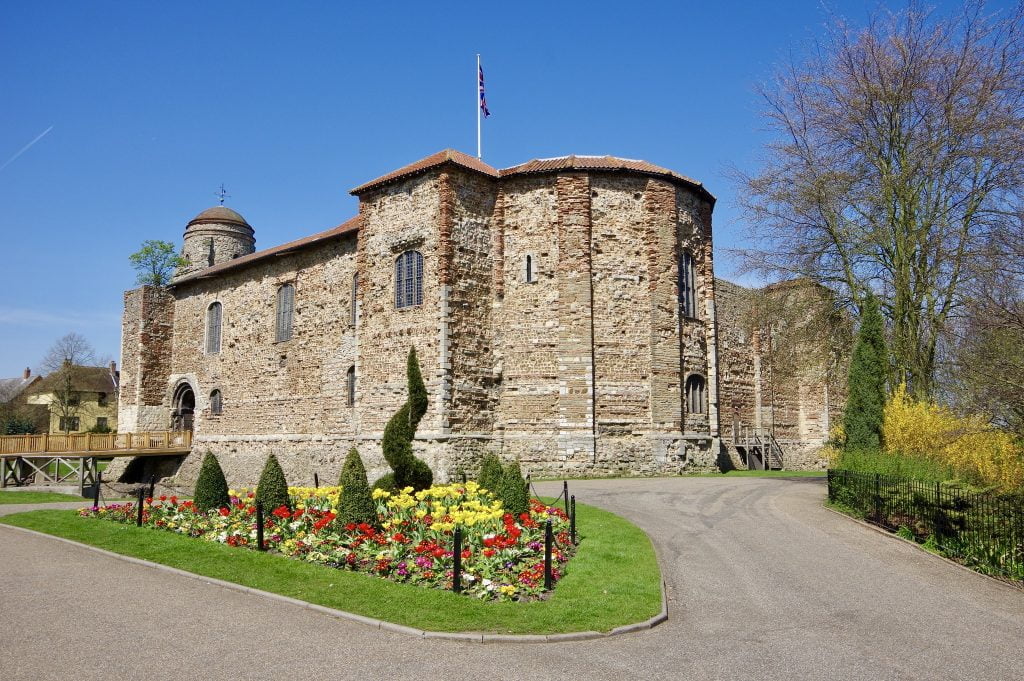
Tower of London
Located along the boundary of London’s city proper (but now well within the metropolis’ spread), the White Tower dates back to the 11th century. It’s another one of William the Conquerer’s legacies and one of his greatest fortresses of all time. Its construction was commissioned right after his coronation and took 20 years to be fully constructed. It’s one of the most iconic historical buildings in the world today and even houses the oldest surviving Norman church.
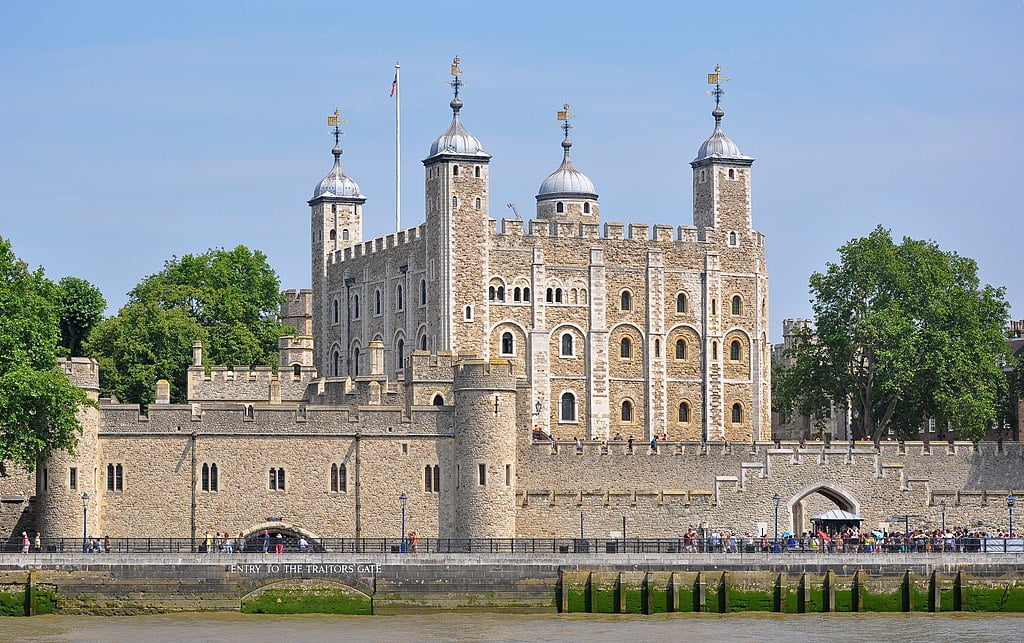
Dudley Castle
This is another original motte-and-bailey castle from right after the Norman conquest. It was commissioned by Ansculf de Picquigny, a Norman noble who fought in the winning conquest alongside William the Conqueror. The architecture was converted to stone in the 12th century by the Lords of Dudley and–although much of it has not withstood the tests of times–the ruins of Dudley Castle, dating back to the 13th century, stand to this day. The 9 meters (29.5 ft) deep motte is its most impressive feature.
So, this is everything you need to know about Norman castles, their origins, and how they fared through history. Tens of centuries old, these castles are some of the best examples of medieval architecture and have proven to be true relics of history.
